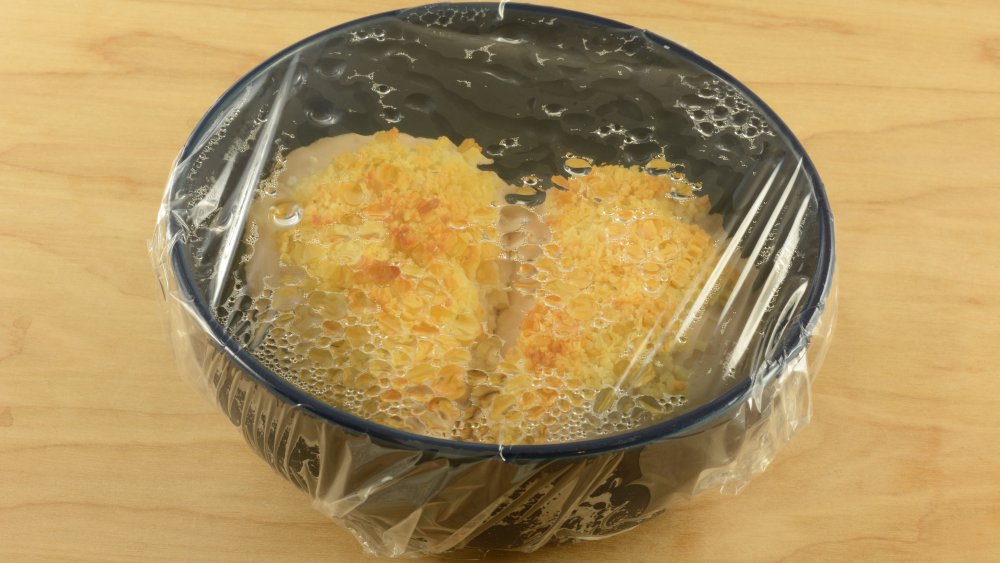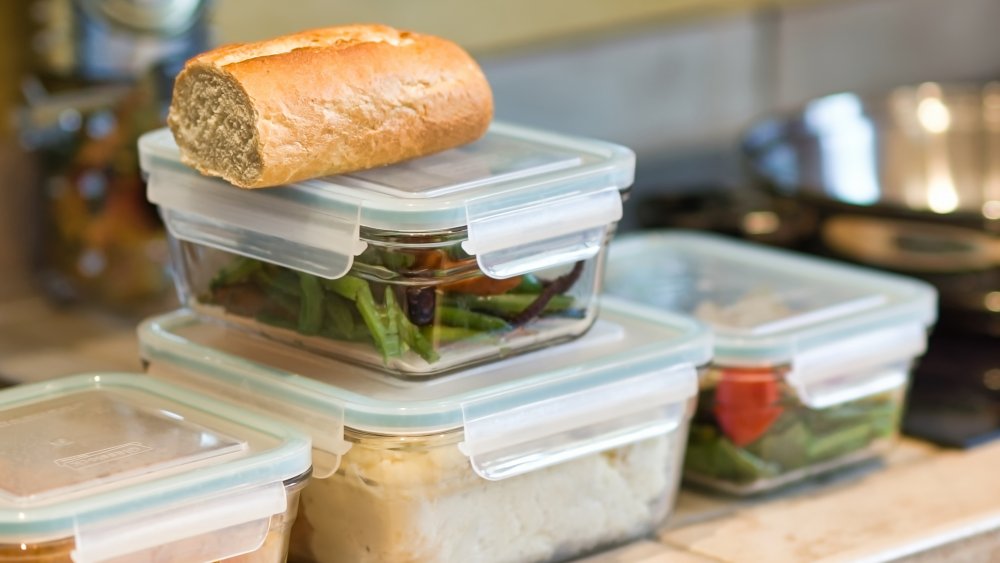Here's What To Know About The Condensation In Your Leftovers
In the Saran-wrapped bowl where you kept last night's leftovers, an ecosystem has formed. It's moist and raining. That would be fine if the contents of your refrigerator were a science project. But now you've got to answer a real-life problem: to eat or not to eat.
You can relax. The water droplets that form inside your plastic-wrapped foods or on the undersides of your Tupperware tops aren't going to hurt you. Cooler air holds less moisture than warmer air, and droplets form in your leftovers when the food you're storing releases moisture (via Cooking Light). This then cools and condenses. The amount of water your leftovers produce depends on the type of food you're storing. For example, because of their high moisture content, vegetables and meats are prime candidates for creating mini rainstorms in their individual containers in your refrigerator.
As former restaurant chef Lindsay D. Mattison will assure you, while condensation might make your soggier, it doesn't make it less-safe to eat (via Taste of Home). It's worth noting that Food scientist Guy Crosby will tell you that even soggy textures are probably not the condensation's fault but rather the result of food breaking down over time.
If you want to prevent condensation in your leftovers, here's how
If the condensation in your leftovers bothers you, there are ways to minimize it. Crosby recommends that you let your hot food stand out at room temperature for between 30 minutes to an hour. Cover it with a piece of parchment paper to reduce the risk of airborne mold spores or spoilage organisms from wreaking havoc. Then stick it in the fridge.
Mattison suggests you go another route. Don't gasp, but the ex-chef recommends that you put your hot food into the refrigerator without the covers on. This will speed up the cooling process and bring your dish down to less-spoilable temperatures, faster. (Remember that bacteria thrive between 40 and 140 degrees Fahrenheit. To prevent food spoilage, USDA guidelines stipulate that you should cool hot leftovers to below 40 degrees within two hours. If you don't, throw them out.) If you do it Mattison's way, leave your food in the fridge uncovered for about an hour. Then cover it up to protect against any airborne organisms.
Neither method is perfect. And while a certain amount of leftover condensation may be inevitable, both will likely reduce cringe-worthy Tupperware rainstorms to acceptable mists.

